REQUEST COMPLIMENTARY SQLS*PLUS LICENCE
7 best free and open source software solutions for database management
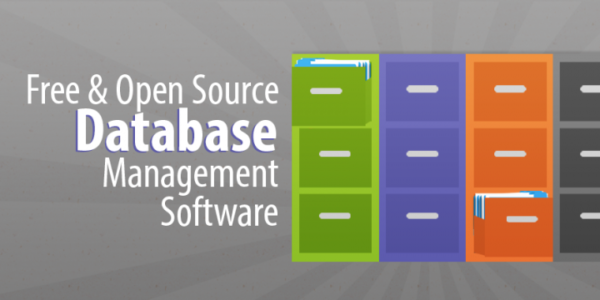
IT departments work with a meager budget. Therefore, cost-cutting will allow the company not only to stay afloat, but also to direct the saved money to development.
To use the available budget more rationally, we will get acquainted with 7 free software products for database development and open source DBM solutions.
CUBRID
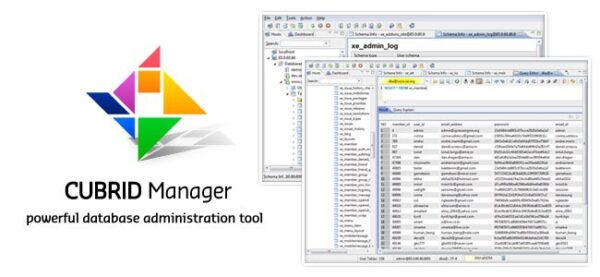
Free open source version, optimized specifically for web applications. The service is designed for processing large amounts of data and generating numerous parallel requests. This solution is implemented in the C programming language.
Advantages of:
- Multiple degree of blockage crushing;
- Backing up online;
- GUI tools and drivers for JDBC, PHP, Python, Perl and Ruby;
- Support for built-in database segmentation for scaling;
- In large systems, data is split into multiple database instances;
- Full text database replication and transaction consistency.
Disadvantages of:
- Does not work on Apple systems;
- No script debugger;
- Manual available in English and Korean only;
- Official forum discussions are usually outdated (most of them several years).
Firebird
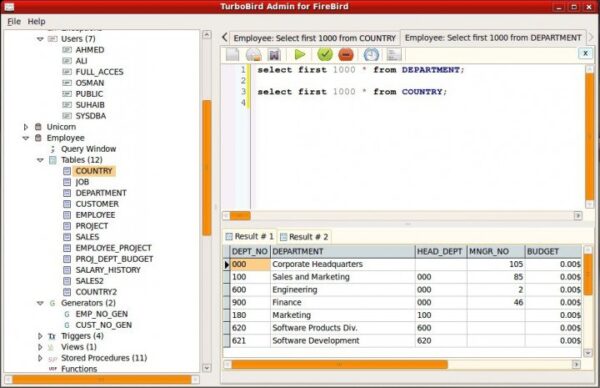
This relational database has been used in production systems (under different names) since 1981 and implements many ANSI SQL standards. Firebird can run on Linux, Windows and various Unix platforms.
Advantages of:
- Trace API for real time monitoring;
- Windows Authentication with Windows Authentication;
- Four supported architectures: SuperClassic, Classic, SuperServer and Embedded;
- Various development tools: commercial tools – FIBPlus and IBObjects;
- Possibility of automatic deployment for database cleaning;
- Event notifications from database triggers and stored procedures;
- Free support for the global Firebird community. What is important when developing database requirements.
Disadvantages of:
- Integrated replication support is not included and is only available as an add-on;
- Lack of timesheets and integration with other database management systems;
- Windows Authentication is not sufficient compared to solutions available in other operating systems.
MariaDB
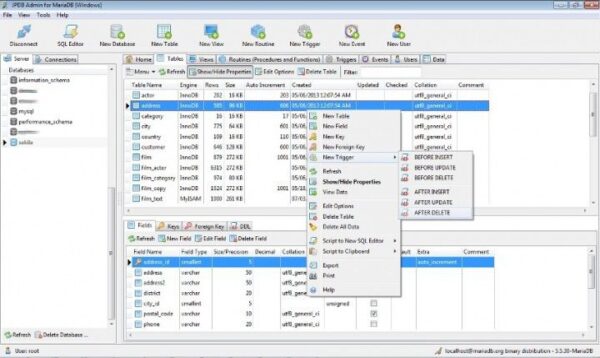
Created by MySQL developers, MariaDB is used by technical giants such as Wikipedia, Facebook and even Google. MariaDB is a database server that offers a built-in replacement for MySQL functionality. Security is the main principle and priority of DBMS developers. In each release they add all MySQL security patches and improve them if necessary.
Advantages of:
- Scalability with easy integration;
- Real-time access;
- Basic MySQL functions (MariaDB is an alternative to MySQL);
- Alternative storage mechanisms, server optimization and patches;
- Extensive knowledge base on SQL database development, accumulated during 20 years of MariaDB work.
Disadvantages of:
- There is no password complexity check plugin;
- No memcached interface (distributed caching system in RAM);
- No optimizer trace.
MongoDB
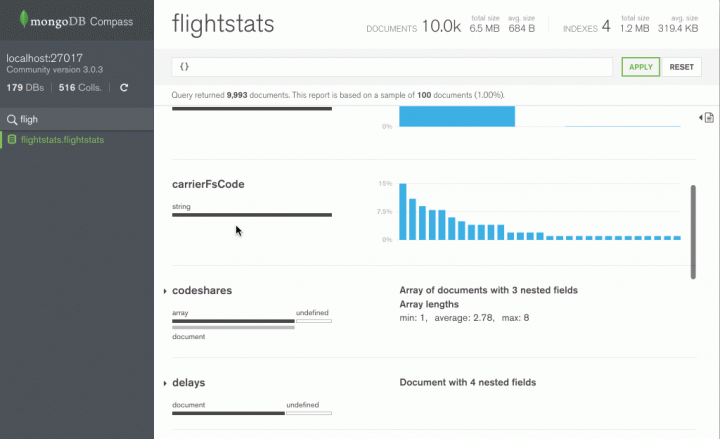
MongoDB was founded in 2007 and is known as a “database for great ideas”. The project is funded by such renowned investors as Fidelity Investments, Goldman Sachs Group, Inc. and Intel Capital.
Since its inception, MongoDB has been downloaded 20 million times and is supported by over 1000 partners. These partners are committed to a free and open source solution.
Advantages of:
- Document check;
- Encrypted storage mechanism.
Popular use cases:
- mobile applications;
- product catalogues;
- content management;
- Real-time applications with memory storage mechanism (beta);
- reduces the time between initial failure and recovery.
Disadvantages of:
- Not suitable for applications that require complex transactions;
- Not suitable for legacy applications;
- Young solution: Software is changing and evolving rapidly.
MySQL
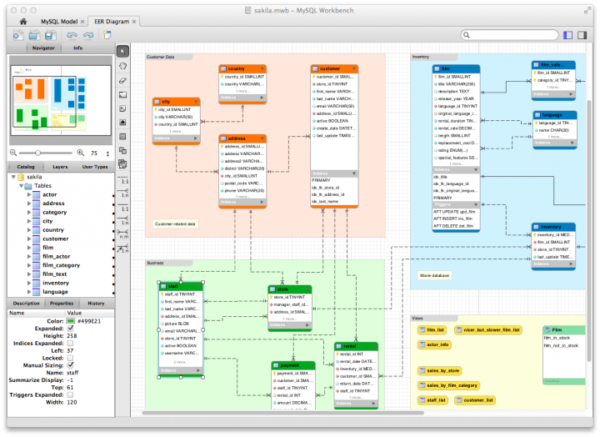
The most prominent representative of our database development programme review. MySQL exists since 1995 and is now owned by Oracle. The DBMS has open source code. There are also several paid versions that offer additional features, such as georeplication of the cluster and automatic scaling.
Since MySQL is an industry standard, it is compatible with virtually all operating systems and is written in C and C++. This solution is an excellent option for international users. The DBMS server can display error messages to the clients in several languages.
Advantages of:
- Checking on the server side;
- Possibility of local use;
- Flexible privilege and password system;
- Secure encryption of all password traffic;
- A library that can be built into offline applications;
- Provides the server as a separate client/server program for the network environment.
Shortcomings in practical development and administration of MySQL databases Acquired by Oracle:
- users believe that MySQL no longer falls into the category of free and open source software;
- is no longer supported by the community;
- users can no longer fix bugs or patches;
- loses to other solutions due to slow updates.
PostgreSQL
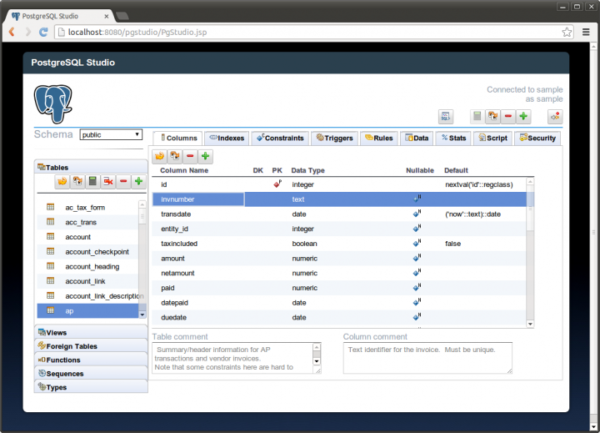
PostgreSQL is another outstanding open source solution that runs on all major operating systems including Linux, UNIX (AIX, BSD, HP-UX, SGI IRIX, Mac OS X, Solaris, Tru64) and Windows. PostgreSQL fully complies with the principles of ACID (atomicity, consistency, isolation, resilience).
Advantages of:
- Ability to create custom data types and query methods;
- The database development environment performs stored procedures in more than a dozen programming
- languages: Java, Perl, Python, Ruby, Tcl, C/C++ and its own PL/pgSQL;
- GiST (Generalized Search System): integrates various sorting and search algorithms: B-tree, B+-tree, R-tree, partial sum trees and ranked B+-trees;
- Ability to create more parallelism without changing Postgres code, such as CitusDB.
Disadvantages of:
- The MVCC system requires regular “cleansing”: problems in environments with high transaction rates;
- Development is a large community: too much effort for improvement.
SQLite
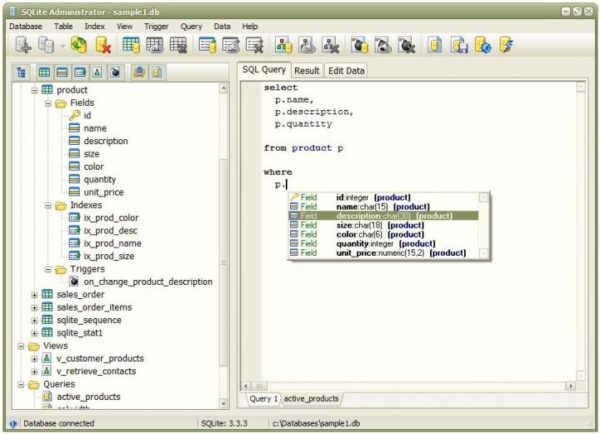
Proclaimed the most common DBMS in the world, SQLite was born in 2000 and is used by Apple, Facebook, Microsoft and Google. Each release is thoroughly tested. SQLite developers provide users with bug lists as well as a chronology of code changes for each version.
Advantages of:
- No separate server process;
- The file format is cross-platform;
- Transactions meet ACID requirements;
- Professional support available.
Disadvantages of:
Not recommended for:
- client-server applications;
- large scale sites;
- large data sets;
- programs with a high degree of multi-threading.
Any ideas?
Did I miss any of the significant advantages or disadvantages of the database development solutions listed above? Do you think there are better alternative DBMS solutions? Share your opinion in the comments.
MORE NEWS
PreambleNoSql is not a replacement for SQL databases but is a valid alternative for many situations where standard SQL is not the best approach for...
PreambleMongoDB Conditional operators specify a condition to which the value of the document field shall correspond.Comparison Query Operators $eq...
5 Database management trends impacting database administrationIn the realm of database management systems, moreover half (52%) of your competitors feel...
The data type is defined as the type of data that any column or variable can store in MS SQL Server. What is the data type? When you create any table or...
PreambleMS SQL Server is a client-server architecture. MS SQL Server process starts with the client application sending a query.SQL Server accepts,...
First the basics: what is the master/slave?One database server (“master”) responds and can do anything. A lot of other database servers store copies of all...
PreambleAtom Hopper (based on Apache Abdera) for those who may not know is an open-source project sponsored by Rackspace. Today we will figure out how to...
PreambleMongoDB recently introduced its new aggregation structure. This structure provides a simpler solution for calculating aggregated values rather...
FlexibilityOne of the most advertised features of MongoDB is its flexibility. Flexibility, however, is a double-edged sword. More flexibility means more...
PreambleSQLShell is a cross-platform command-line tool for SQL, similar to psql for PostgreSQL or MySQL command-line tool for MySQL.Why use it?If you...
PreambleWriting an application on top of the framework on top of the driver on top of the database is a bit like a game on the phone: you say “insert...
PreambleOracle Coherence is a distributed cache that is functionally comparable with Memcached. In addition to the basic function of the API cache, it...
PreambleIBM pureXML, a proprietary XML database built on a relational mechanism (designed for puns) that offers both relational ( SQL / XML ) and...
What is PostgreSQL array? In PostgreSQL we can define a column as an array of valid data types. The data type can be built-in, custom or enumerated....
PreambleIf you are a Linux sysadmin or developer, there comes a time when you need to manage an Oracle database that can work in your environment.In this...
PreambleStarting with Microsoft SQL Server 2008, by default, the group of local administrators is no longer added to SQL Server administrators during the...















